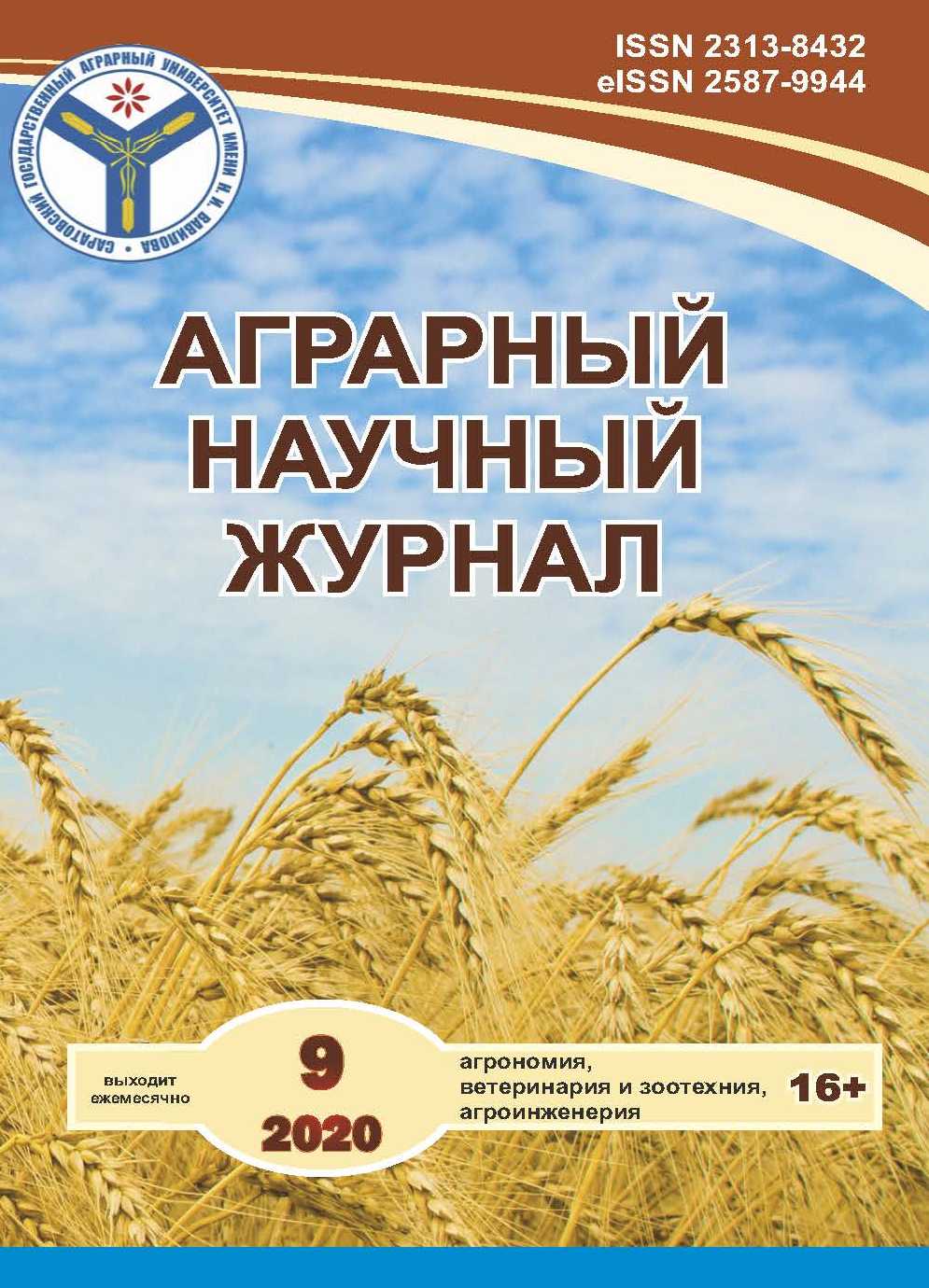Influence of main processing methods on the water-physical properties of the soil and soybean yield in Western Siberia
DOI:
https://doi.org/10.28983/asj.y2020i9pp21-24Keywords:
methods of tillage, soy, water-physical properties, soil density, available moisture reserves, yieldAbstract
The results of research on the influence of basic tillage methods on agrophysical indicators in soybean cultivation are presented. Over the years of research (2017-2019), the soil density (0-30 cm) during soybean cultivation according to the studied methods of basic tillage was optimal for plant growth and development and was within the range of 1.00-1.27 g/cm3 before sowing; 1.05-1.19 g/cm3 during the branching phase; 1.10-1.36 g/cm3 before harvesting. The reserves of available moisture before sowing in the twenty-centimeter layer of soil were characterized by satisfactory and good security (30.4-43.0 mm), the meter layer-good and very good security (150.8-172.3 mm) on variants with soil treatment and satisfactory at zero treatment-125.1 mm. In the phase of soybean branching, the available moisture reserves at a depth of 0-20 cm were characterized by satisfactory water availability (31.0-35.6 mm) and good (159.6-160.6 mm) in the meter layer of soil. Before cleaning, the available moisture reserves were characterized by satisfactory security. The highest yield was obtained by a differentiated method of tillage (20-22 cm) with an excess of control (dump method, 20-22 cm) by 0.06 t/ha. A decrease in the depth of processing (12-14cm) led to a decrease in the yield of soybean grain by 0.07-0.11 t/ha for the studied methods of basic soil treatment.
Downloads
References
2. Гаевая Э.А. Влияние различных способов обработки почвы на её физические свойства // Научный журнал КубГАУ. – 2008. – № 39(5). – С 15–18.
3. Киселёва Т.С., Полякова Е.М., Рзаева В.В. Влияние способов основной обработки почвы на плотность почвы и урожайность нута в северной лесостепи Тюменской области // Инновационные технологии в полевом и декоративном растениеводстве: материалы III Всерос. науч.-практ. конф. – Курган, 2019. – С. 110–113.
4. Кислов В.А. Способы обработки почвы и посева сои в степной зоне Южного Урала // Известия Оренбургского аграрного университета. – 2015. – № 1 (51). – С. 39–41.
5. Лобачев Ю.В. Изменчивость и взаимосвязь хозяйственно-полезных показателей сои под влиянием гербицидов // Аграрный научный журнал. – 2020. – № 5. – С. 19–22.
6. Неклюдов А.Ф. Севообороты – основы урожая. – Омск: Западносибирское кн. изд-во, 1980. – 94 с.
7. Оптимизация обработки почвы в севооборотах / И.Н. Листопадов [и др.] // Земледелие. – 2013. – № 7. – С. 3–8.
8. Салихов А.С. Способы основной обработки почвы и урожайность яровых зерновых культур // Земледелие. – 2004. – № 4. – С. 14–15.
9. Третьяков Н.Н. Агрономия. – СПб.: Квадро, 2017. – 475 с.
Downloads
Published
Issue
Section
License
Copyright (c) 2020 The Agrarian Scientific Journal

This work is licensed under a Creative Commons Attribution-NonCommercial 4.0 International License.








